- Details
- Written by Josh Baakko
- Category: Prototype Concepts
- Hits: 1626
How Railroad Crossings Work
A YouTube video by Mark Clay McGowan
Check out this great video posted in 2020 by YouTuber and retired railroad signal employee Mark Clay McGowan. We've discussed him making some exclusive videos for Model Railroad Tips, but for now, here's one of his videos!
- Details
- Written by Adam Peszel
- Category: Prototype Concepts
- Hits: 2154
Iron & Steel
Part 1 Iron Production
While iron has been in use for millennia and low grades of steel for a few centuries, mass production of both did not begin until the Industrial Revolution. Within a century steel supplanted iron as the metal of choice, and during that time saw four different furnace designs for producing steel from iron. Today, steel mills are still the epitome of heavy industry with all the grit associated to it.
Raw Materials
The production of iron and steel begins with three main ingredients: iron ore, coal and a flux stone. The raw materials are brought in by rail, barge or ship and stored in material yards near the blast furnace.
Ore
Iron ore comes in a number of minerals. The most common minerals during most of the use of iron, has been limonite, hematite and magnetite with iron content up to 72%. By the mid 1900’s, high grade ore was growing scarce. Experiments were started to find a way to use a low grade ore called taconite, which makes up the bulk of today’s ore supply
Flux Stone
Flux stone can be limestone or dolomite and is used to remove impurities during the iron and steel making process. The stone is mined in massive quarries and crushed to desired size before being shipped to a steel mill. While the blast furnace can use a flux stone shipped like this, other second level furnaces need a better flux stone. For this use, the stone once crushed to a desired size is sent thru a vertical or rotary kiln and baked to remove moisture. This is called burnt lime or burnt dolomite and used to refine the chemistry to tighter values.
Coke
Fuel comes in two forms, liquid and solid. Most primary blast furnace fuel is coke. Coke is made by baking coal at high temperatures in a sealed oven with no air flow. During the baking process, volatile hydrocarbons are baked off leaving a more pure carbon source. The volatile hydrocarbons can either be captured and used in the chemical industry or burned off as waste.
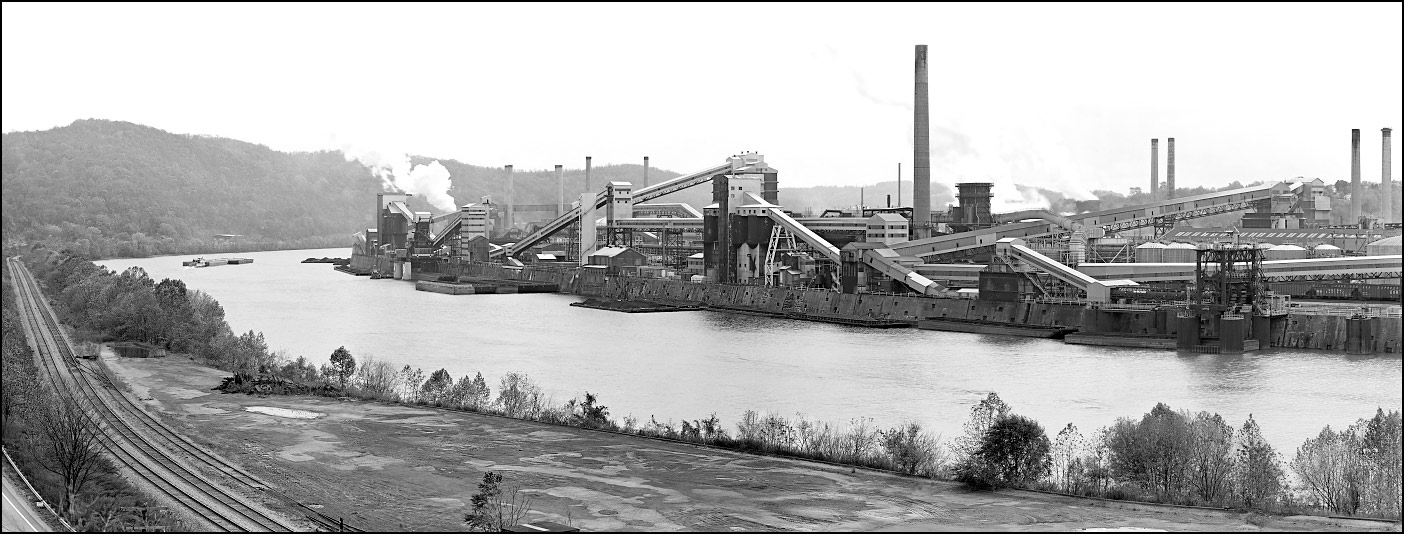 Picture - Clairton Coke Plant
Picture - Clairton Coke Plant
- Details
- Written by Adam Peszel
- Category: Prototype Concepts
- Hits: 2473
Dust Collection - The Ins and Outs
Originally published in 2011 in the Model Railroad Tips email newsletter, re-posted here on Model Railroad Tips 2.0 for your reading pleasure. Author Adam Peszel.
Dust collection has been conducted in industry for well over fifty years, but as the EPA and OSHA became involved particulate and fume control has become more important for all industries. Today, any industry that generates fumes or particulate matter in production uses dust collectors. From simple technologies of settling chambers to more complex technologies of electrostatic precipitation, dust collectors are easy to model and add to the overall effect on your scene.
Inertial Separators
Inertial separators are the simplest concept and probably the earliest in use. These include settling chambers, where the sudden increase in duct volume drops the air pressure and increases the volume that an amount of air can occupy, also dropping air speed. This change causes heavy particulates to drop out of the air stream. Figure 1 shows the basic design of a settling chamber. A duct leads into a large chamber and a duct leads out. On the bottom are hoppers to hold the particulate for easy removal. A related design is the baffle chamber. The general design is like the settling chamber, but internal divider curtains redirect the airflow. As the airflow changes direction, pressure and speed are further reduced allowing better particulate removal. The principle is detailed in Figure 2.
A third type of inertial separator is the cyclone separator. Cyclone separators pull air into a cylinder with a cone on the bottom, see Figure 3. The air stream moves down the outside of the cylinder into the cone. The cone redirects the airstream up into the center of the cyclone and through the outlet at the top. By changing volume, direction and speed of the airstream, the particulate matter drops out into the bottom of the cone. Figure 4 shows a variation of the cyclone, a multi-cyclone. In this application, several cyclones are assembled inside a main housing. The main housing has the inlet from the ductwork and an outlet.
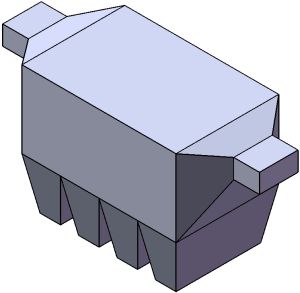
- Details
- Written by Gregory Peet
- Category: Prototype Concepts
- Hits: 2028
Snowplow Extra
By: Gregory Peet
The recent storms bringing heavy snow to much if the Midwest reminded me of snowplow extras that I used to see in the Upper Peninsula of Michigan. The Soo Line would use a large Jordan spreader with a full height vee-plow on the front. Motive power would be a GP-7 or GP-9 followed by a wooden caboose. The advantage to a Jordan spreader was the long wings that could be expanded out to clear snow back several feet from the right of way.
The Copper Range Railroad used a wooden Russell snowplow. Although it had “wings” most snowplows cannot clear a swath as wide as a Jordan. The Copper Range also had a Jordan but it was much older and lacked the vee-plow on the front. Their trains were assembled differently. The Russell plow was first, then one of their Baldwin switchers , followed by the Jordan and brought up by the caboose.
Since some of the Copper Range route was paralleled by Michigan highway M-26, I’ve paced them as they rolled along at 25-30 miles per hour through the countryside. They would stop in small towns to back up and use the Jordan to clear away from sidings and around switches Also a crew riding in the caboose would dismount and sweep out the switch points.
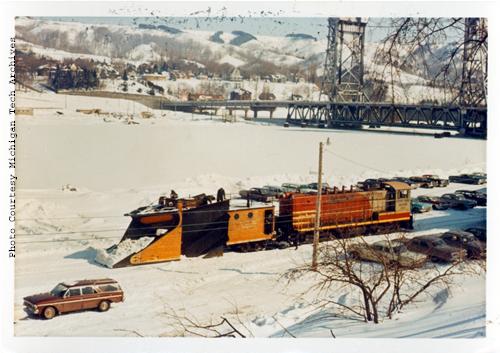
- Details
- Written by Josh Baakko
- Category: Prototype Concepts
- Hits: 5558
Old Taco Bell, New Use
Do you model the contemporary period, and have a Summit Custom Cuts Taco Bell that no longer looks modern? Here's a simple transition that still incorporates the style, but brings the building up to the current era.
2 years ago I happened upon this former Taco Bell, on El Cajon BLVD in San Diego. It clearly matches the prototype used for the Summit Custom Cuts building.
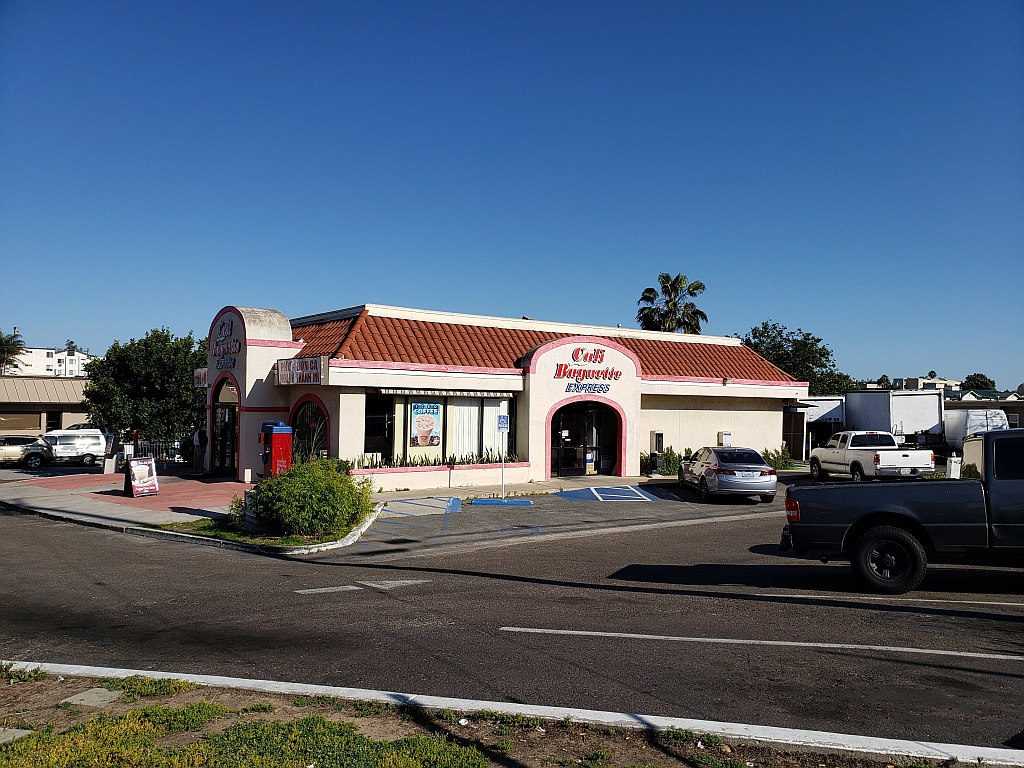
- Details
- Written by Josh Baakko
- Category: Prototype Concepts
- Hits: 1842
Crew Change Point Modeling Idea
Recently Tom Huffman sent me the following photos of a crew change point on the BNSF, in Texas. It's located in Saginaw TX on U.S. 287 business. This is located 1-2 miles south of the BNSF Saginaw TX yard. This is a double track main line.
To model this you will need a small crossing for the crews to walk on and assorted other details visible in the pics. Out of sight to the left in both pics are small trailer generators/floodlights.
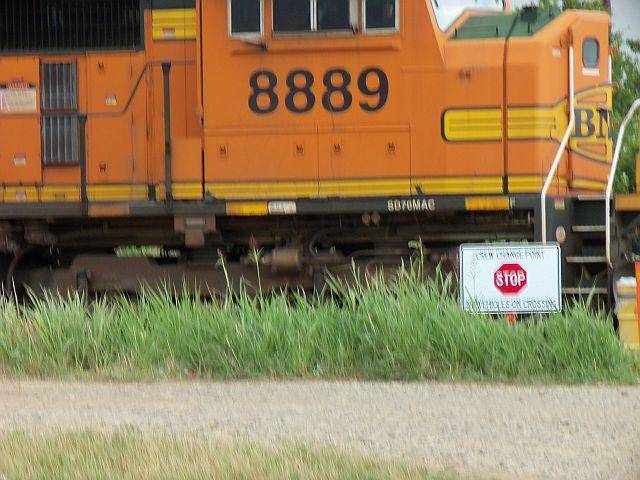
- Details
- Written by Gregory Peet
- Category: Prototype Concepts
- Hits: 3204
Seasonal Business, Christmas Trees
Thirty or so years ago, somewhere around October 1980, I was driving along US-31 in the northern area of Michigan's Lower Peninsula. There the highway often parallels the railroad tracks, which were Conrail at the time.
I knew there was little or no railroad business in most of those small towns I was passing thru. Most of them did not have even a single industry, so I was surprised to see green 50 foot PC boxcars on sidings in every little town. Not just
one, but a dozen or so in burgs such as Levering, Pellston, Alanson [all of which are no longer rail served], etc. I wondered why. What was happening? As I traveled along I came to one town which provided the answer.
Large trucks were bringing in freshly cut Christmas trees. A special machine was quickly wrapping them in mesh fabric and they were immediately being loaded into the awaiting boxcars. It was a seasonal business and certainly and interesting one.
Now on my model railroad each fall I make sure that I deliver some empty boxcars to sidings in little towns for a similar movement on the my pike. The modeling could be further enhanced by having stake trucks or semi-trailers arriving loaded with Christmas trees. The trees can be easily made from what craft stores call “bumpy chenille.” This is material that resembles a pipe cleaner but varies alternately in width from about ¼ inch down to almost nothing. Using a wire-cutters it can be cut at the “almost nothing” end and then about 5 or 6 scale feet lower and “presto” you have a scale Christmas tree. Load several of them into an open stake truck headed toward the loading site and you have a scene.
The machine that wrapped the mesh looked something like a large funnel, where the tree was fed into the big end and came out of the smaller end wrapped tightly and ready for shipment. This was mounted on a 2-wheel trailer so it could easily be moved to the next town. To model this, look in grocery store “gadget” aisles for funnels and select the smallest one available. If nothing can be found small enough, a short piece of tubing could be used, approximately 4 foot in diameter. (Half-inch in HO scale.) Cut it to about a 4 foot length. Search Google images for a better picture of such machines [editor's note, here is a link to a great article showing the machine at work: http://pabook.libraries.psu.edu/palitmap/ChristmasTree.html ].
© 2010, 2019, Gregory Peet, https://www.modelrailroadtips.com

